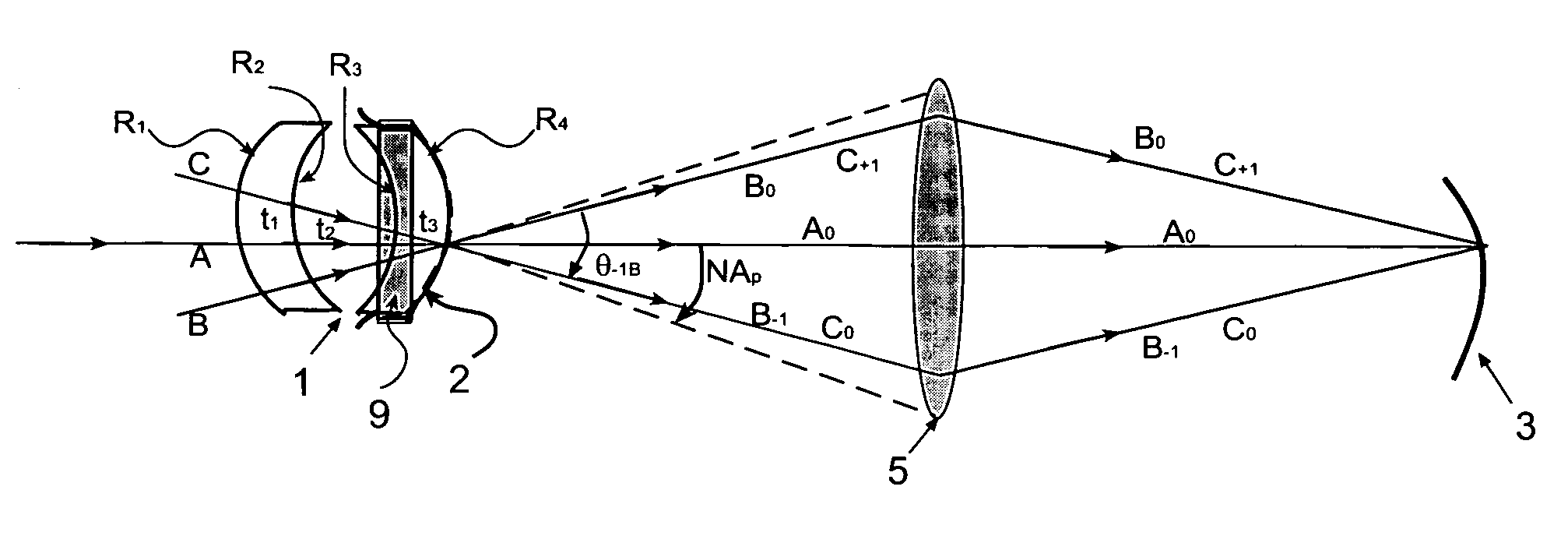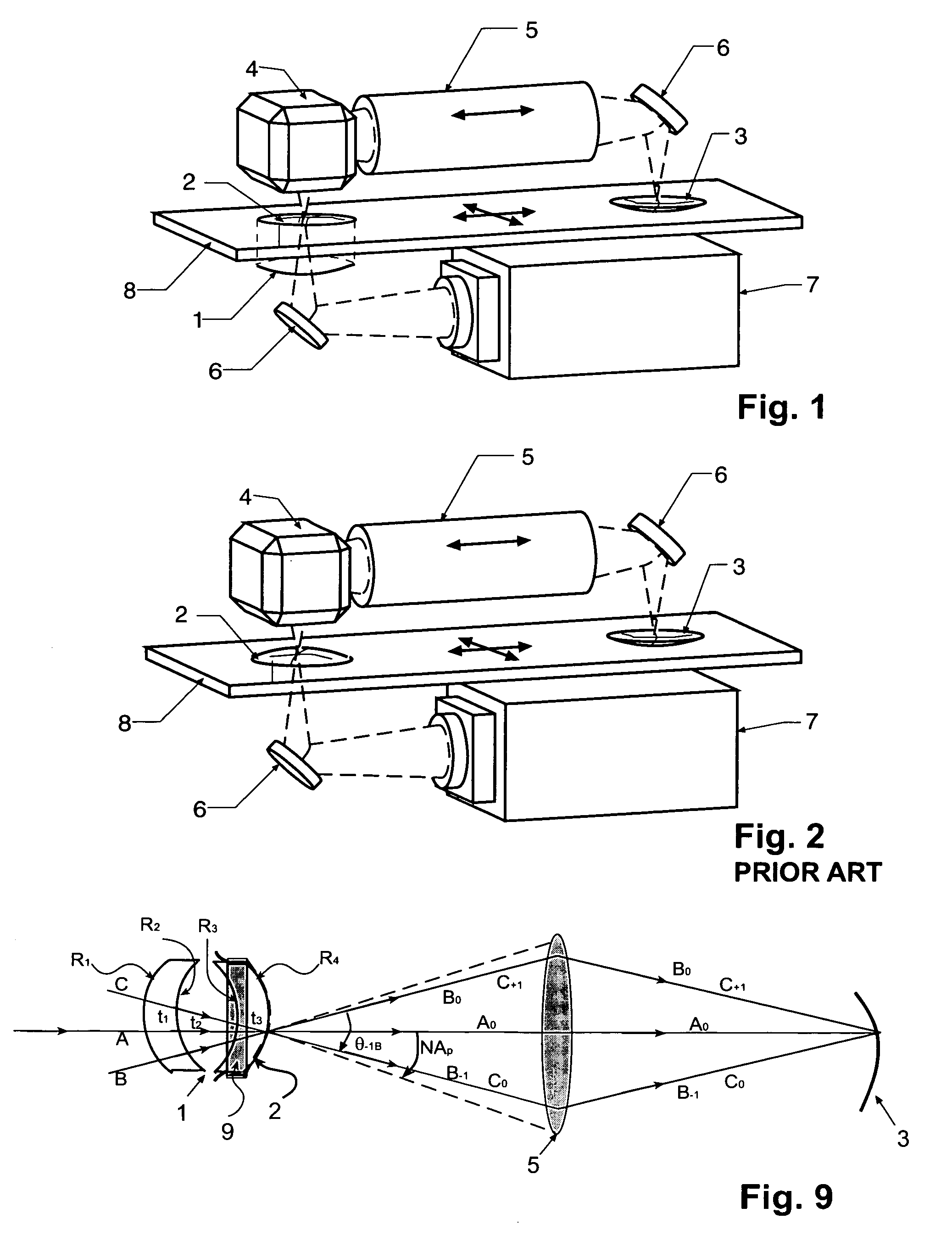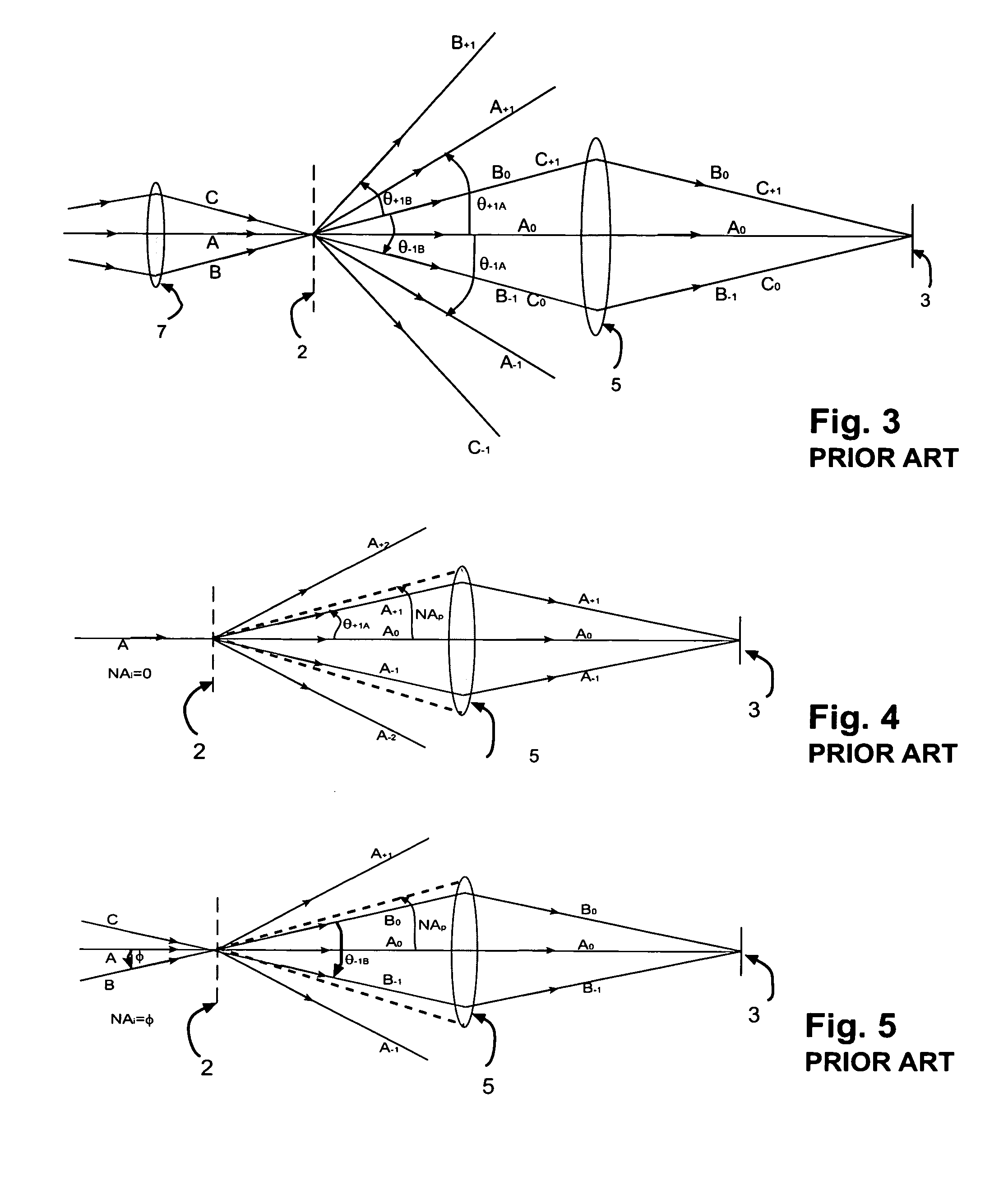Illumination compensator for curved surface lithography
a curved surface, lithography technology, applied in the direction of microlithography exposure apparatus, printers, instruments, etc., can solve the problems of incoherent illumination, lens cannot transmit higher-order frequencies, and the image quality of aerial images begins to suffer, so as to achieve effective coupling
- Summary
- Abstract
- Description
- Claims
- Application Information
AI Technical Summary
Benefits of technology
Problems solved by technology
Method used
Image
Examples
Embodiment Construction
[0026]FIG. 1 and FIG. 2 show the preferred embodiment for patterning onto curved substrates by using a zero-power meniscus lens pair 1, mask 2 having a curvature that is identical to that of the substrate 3 (i.e., the size and shape of the mask 2 and substrate 3 are the same) by additionally performing the imaging using a 1:1 projection imaging system featuring reverser 4, projection lens 5, and fold mirrors 6 as required in directing the patterning beam from illumination source 7 to substrate 3. Stage 8 provides scanning motion. All elements of FIG. 2 (PRIOR ART) are also present in FIG. 1. The difference between the system of FIG. 1 and the PRIOR ART system of FIG. 2 is the presence of the zero-power meniscus lens pair 1, in FIG. 1 and the absence of the zero-power meniscus lens pair 1, in FIG. 2. The zero-power men iscus lens pair 1, in FIG. 1 provides an effective beam coupling between the curved mask and the projection lens.
[0027]We hereby discuss the basis of our invention, in...
PUM
| Property | Measurement | Unit |
|---|---|---|
| thickness | aaaaa | aaaaa |
| size | aaaaa | aaaaa |
| shape | aaaaa | aaaaa |
Abstract
Description
Claims
Application Information
 Login to View More
Login to View More - R&D
- Intellectual Property
- Life Sciences
- Materials
- Tech Scout
- Unparalleled Data Quality
- Higher Quality Content
- 60% Fewer Hallucinations
Browse by: Latest US Patents, China's latest patents, Technical Efficacy Thesaurus, Application Domain, Technology Topic, Popular Technical Reports.
© 2025 PatSnap. All rights reserved.Legal|Privacy policy|Modern Slavery Act Transparency Statement|Sitemap|About US| Contact US: help@patsnap.com



